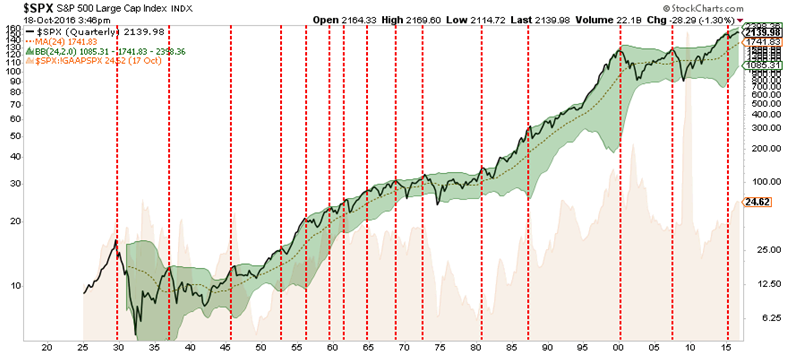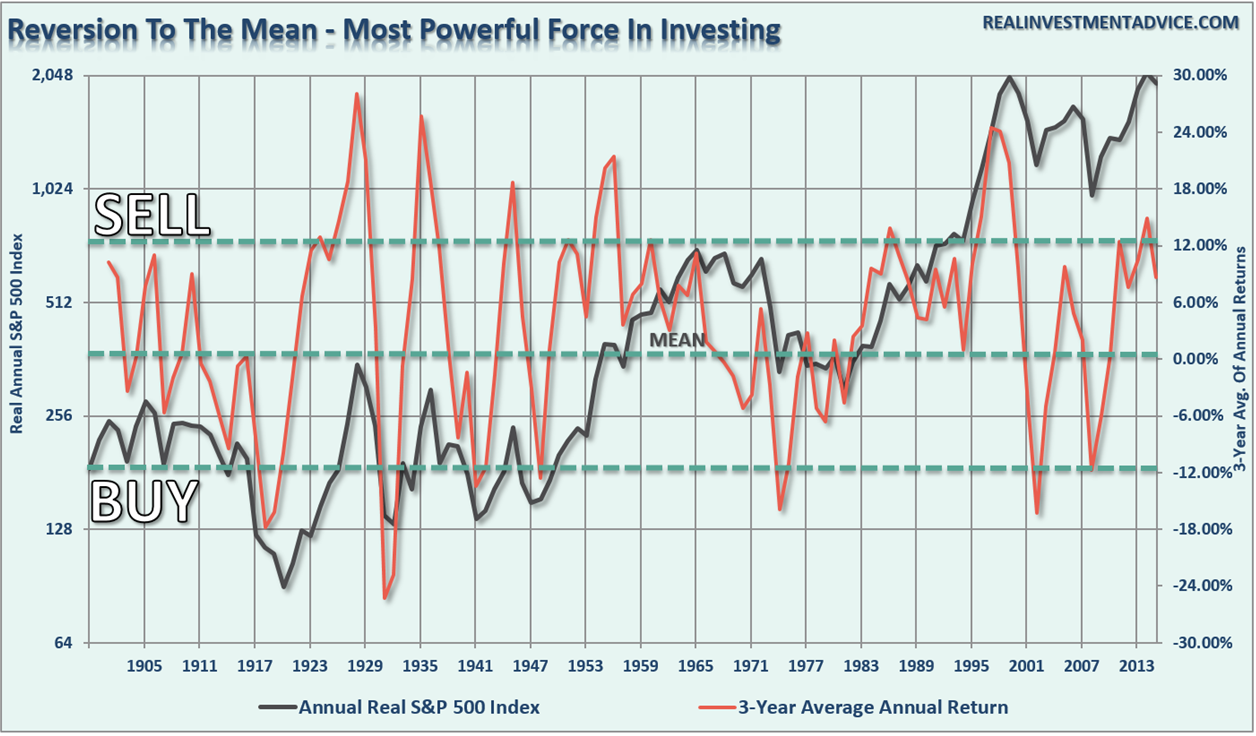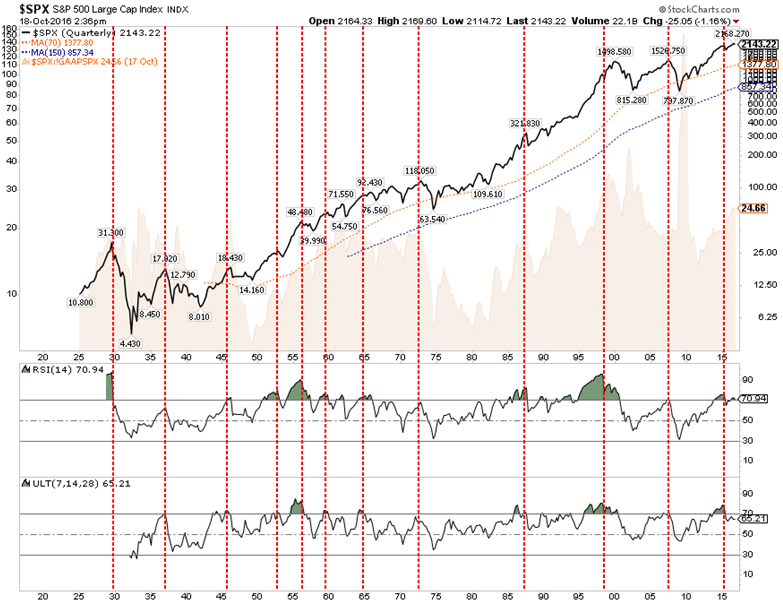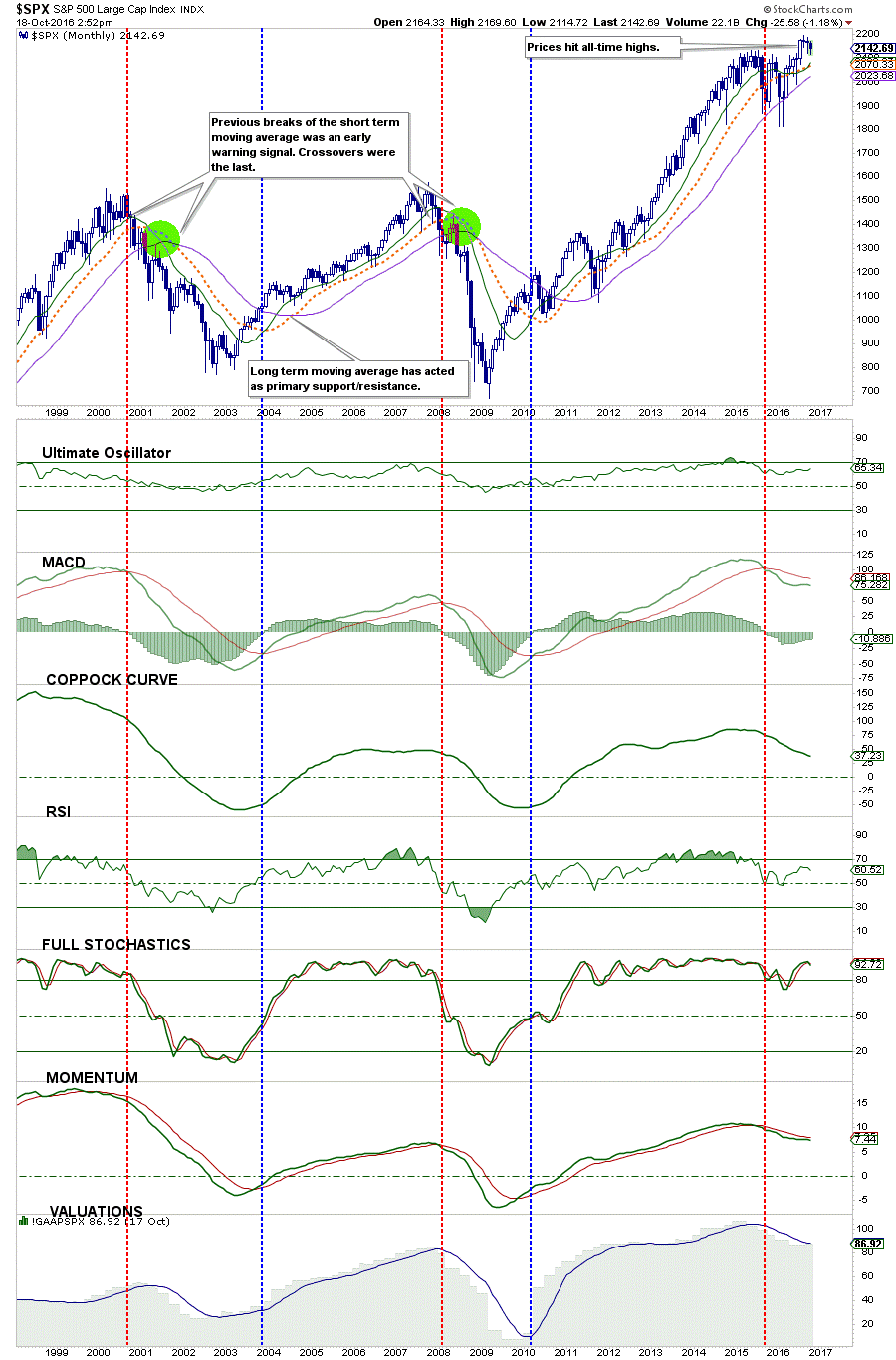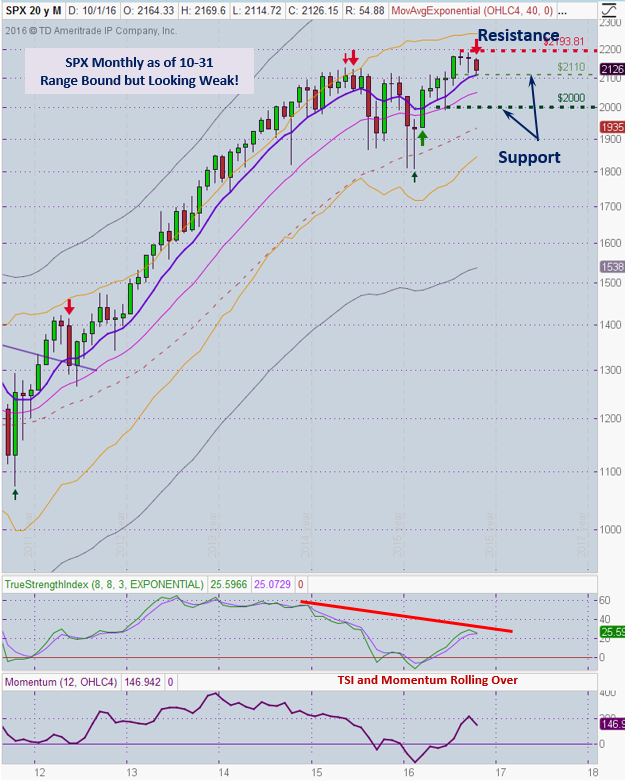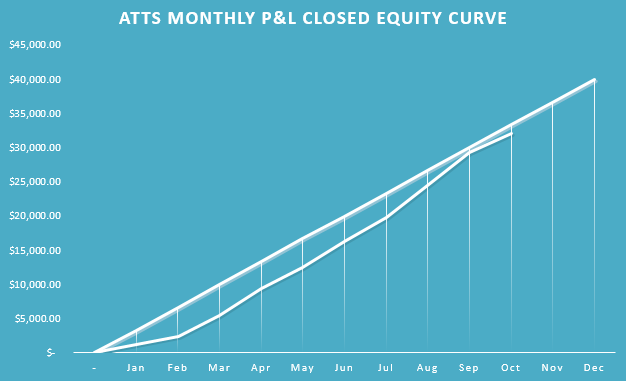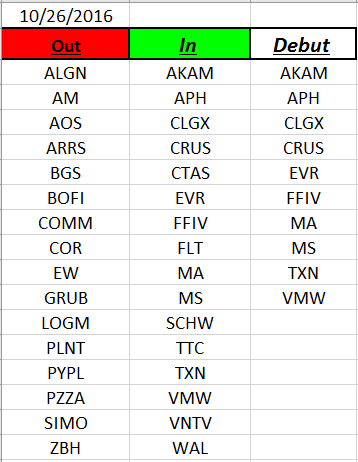Good Day Traders,
Overview & Highlights: Another great article in this week’s edition from Mike Trager. Mike provides another look at Reversion to the mean from a long-term perspective. The two major events over the next few days are the Fed’s decision on Wednesday and the Election November 8th. At this point the market is stuck in a range with a slightly negative bias for both the SPX and RUT. I’ll focus this week on selling premium and trading off of support and resistance.
Webinars: At Active Trend Trading we offer two webinars per week to provide training plus trade and market updates. See the schedule below for the next webinars.
The How to Make Money Trading Stock Show—Free Webinar every Friday at 11:00 a.m. PDT. This weekly live and recorded webinar helped traders find great stocks and ETF’s to trade with excellent timing and helped them stay out of the market during times of weakness.
How to Make Money Trading Stocks on Friday, Nov 4th
Register now for the next live webinar at the link below:
Register Here: https://attendee.gotowebinar.com/register/2177817353127039747
11:00 a.m. PDT
Next Training Webinar: Nov 2nd
For Premium Members, our Wednesday evening training is developing some fantastic traders!
Topic: Power of Compounding and Margin
Mike’s Macro Market Musings: Reversion Revisited
One of the primary issues currently being ignored by the markets is the inherent risk of mean reversions. Mean reversions are one of the most powerful forces in the financial markets as, like gravity, moving averages provide the gravitational forces around which prices oscillate. This concept applies in all time frames, whether on relatively shorter charts such as the daily and weekly charts or on longer monthly and quarterly charts. The process of mean reversion is one of the pillars upon which the Active Trend Trading System is built as well as the Early Warning Alert service. Since the focus of these columns is primarily on longer term and more macro considerations, let’s examine this concept of mean reversion on some monthly and quarterly charts.
The chart below shows the long-term view of the S&P 500 on a quarterly basis relative to its 24 quarter (or 6 year) moving average and a 24 period Bollinger Band set at 2 standard deviations from the 24-period moving average.
Not surprisingly, when prices deviate too far from their underlying moving average (2-standard deviations from the mean) there is generally a reversion back to the mean, or worse (or better). As you will notice, the bear markets in 2000 and 2007 were not just reversions to the mean but rather a massive reversion to 2-standard deviations below the mean. Like stretching a rubber band as far as possible in one direction, the snap-back resulted in large advancing cyclical bull markets.
The chart below brings this idea of reversion into a bit clearer focus. The 3-year average annual real return of the S&P 500 is overlaid against the inflation-adjusted price index itself.
This chart shows that over a period of more than 100 years, whenever the 3-year annual return of the S&P 500 has been more (or less) than 12% away from its historical average, the average annual return going forward from those peaks and troughs has reverted to its long term norm and even overshot it in the process of doing so. Note that this extreme in 3 year annual returns was surpassed early in 2015 and has already rolled over as the market has struggled to advance since then. These circumstances have not presented themselves very often over the past 100+ years, but when they have, they seem to have been pretty meaningful. While this analysis does NOT mean the market is set to crash, it does suggest that a reversion in returns is likely. Unfortunately, the historical reversion in returns has often coincided at some juncture with a rather sharp decline in prices. Much of this perspective can be validated by the following charts, which are copied and pasted from elsewhere and which I provide for informational purposes without commentary or explanation since I believe they mostly speak for themselves.
None of the above information is meant to help with market timing. What it can be useful for is longer term portfolio and investment planning. From the lows in March, 2009, the S&P 500 has more than tripled, advancing more than 200%, and the Nasdaq has quadrupled, having advanced more than 300%. I believe it to be unreasonable and unrealistic to expect similar returns over the next 7 years or so; the principles of mean reversion and overshoots applies to annual investment returns just as much as it does to anything else. While the QE, ZIRP, and NIRP policies of the central banks over the past few years has likely delayed the onset of this process of mean reversion, it has not eliminated it.
The central banks increasingly appear to be “tapped out” in terms of their ability to keep financial markets artificially inflated. Even Mario Draghi, ECB head, just this past week said out loud that “nothing lasts forever” in reference to central bank policies and actions over the past several years. I expected a sharp downward reaction by the markets in reaction to that statement, which has not happened. At least, not yet.
General Market Observation: With this being the end of October a view of how the 3 Tracing Indexes did in October is appropriate. Both the SPX and RUT are turning over on a monthly chart. Oscillators for both have rolled over and the TSI has crossing to the downside. Remember the Monthly charts have a longer-term outlook and while there may be brief bounces countertrend, the longer-term outlook for both indexes is weak. Both Indexes are showing negative divergence on the Monthly TSI. The NDX thus far is holding up best, but finished the month with a Bearish Harami reversal signal.
Two extra market moving events will take place over the next 8 days. First the Fed reports out on Wednesday. While no rate action is expected the tone of the decision could telegraph the probability of December’s action. The Fed wants to raise rates and remaining credibility is on the line. Then there’s the Presidential Election. Regardless of your choice for President, the outcome has the potential of tipping the market either up or down. At this point trading the indexes off support and resistance for quick trades is one way of limiting exposure with manageable risk. Staying in cash is also an excellent choice with these two unknowns hanging over the market.
The monthly chart of the SPX shows an Index that looks prime to rollover at the slightest unexpected event. August and September provide two spinning top doji’s at resistance. Today price action closed at support of the 2110 level. If this support breaks it could be a quick trip to 2000. This would reflect a drop of about 9% from this year’s high and potentially provide enough of a relief to trigger a rally. This potential rally could be our only gift from Santa this year. As indicated above I will continue to wait for price action to revisit either support or resistance and stay out of the way when prices are in between.
SPX: Downside Market Short the SPY, SPY Puts or SPXU.
Preferred Long ETF’s: SPY, UPRO and SPXL
NDX: Downside Market Short the QQQ, QQQ Puts or SQQQ.
Preferred Long ETF’s: QQQ and TQQQ
RUT: Downside Market Short the IWM, IWM Puts or TZA.
Preferred Long ETF’s: IWM and TNA
The How to Make Money Trading Stock Show—Free Webinar every Friday at 11:00 a.m. PDT. This weekly live and recorded webinar helped traders find great stocks and ETF’s to trade with excellent timing and helped them stay out of the market during times of weakness.
How to Make Money Trading Stocks on Friday, Nov 4th
Register now for the next live webinar at the link below:
Register Here: https://attendee.gotowebinar.com/register/2177817353127039747
11:00 a.m. PDT
To get notifications of the newly recorded and posted How to Make Money Trading Stocks every week subscribe at the Market Tech Talk Channel: https://www.youtube.com/c/MarketTechTalk
Index Returns YTD 2016
ATTS Returns for 2016 through Oct 31, 2016
Percent invested initial $100K account: Strategies I & II invested at 14.0%; Strategy III invested at 20%.
Current Strategy Performance YTD (Closed Trades)
Strategy I: Up $950.30 or +1.35%
Strategy II: Up $2767.00 or +2.77%
Strategy III: Up $28,310.00
Cumulative YTD: 32.03%
Active Trend Trading’s Yearly Objectives:
– Yearly Return of 40%
– 60% Winning Trades
– Early Warning Alert Target Yearly Return = 15% or better
For a complete view of specific trades closed visit the website at: https://activetrendtrading.com/current-positions/
Updated first full week of each month. The next update after first week in November.
Outs & Ins: Twenty percent of the IBD 50 was swapped out this weekend. Stocks making their yearly debut include: AKAM, APH, CLGX, CRUS, EVR, FFIV, MA, MS, TXN and VMW. Several of these have been on the IBD 50 list in past years. Of the ten stocks added to this week’s list none are at potential buy trigger points. They all have either broke out after earnings and are extended from the daily moving averages or are flashing sell signals.
Watch GRUB for more downside if the ledge gives way at 37.72. FB reports earnings afterhours on 11/2. Worth watching to the upside include: HQY, VEEV, BUFF and PYPL.
Share Your Success: Many of you have sent me notes regarding the success you are having with the Active Trend Trading System. Please send your stories to me at dww@activetrendtrading.com or leave a post on the website. Thanks.

